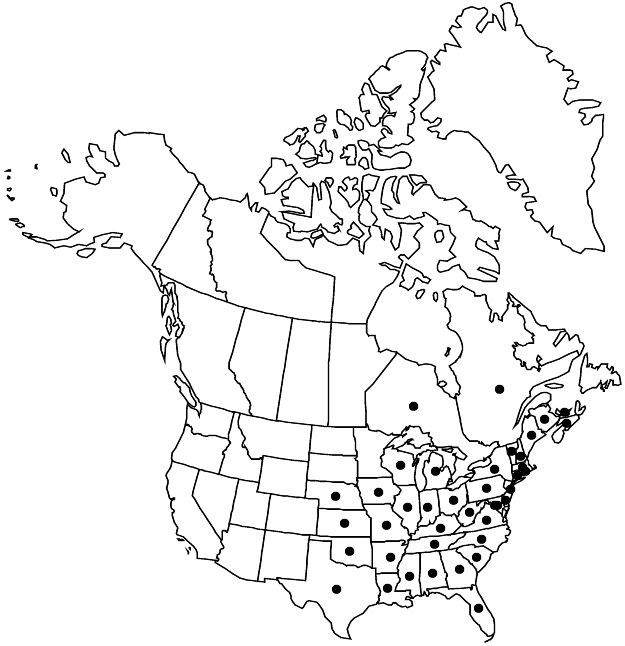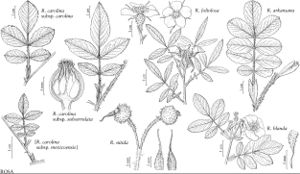Rosa carolina subsp. carolina
Stems spreading, sometimes erect, usually weak; infrastipular prickles (rarely absent), subulate, rarely stout, infrequently mixed with sparse, shorter internodal prickles and aciculi not to apices, eglandular. 2n = 28.
Phenology: Flowering late May–Aug [turions Sep].
Habitat: Pastures, woodlands, glades, openings in woodlands, dry forests and woodlands, roadsides, stream banks, rocky ravines, ledges, bluffs, power line rights-of-way
Elevation: 0–800 m
Distribution

N.B., N.S., Ont., P.E.I., Que., Ala., Ark., Conn., Del., D.C., Fla., Ga., Ill., Ind., Iowa, Kans., Ky., La., Maine, Md., Mass., Mich., Miss., Mo., Nebr., N.H., N.J., N.Y., N.C., Ohio, Okla., Pa., R.I., S.C., Tenn., Tex., Vt., Va., W.Va., Wis.
Discussion
Subspecies carolina is characterized by short, weak, spreading or erect stems armed with erect, flat or, infrequently, subulate, paired infrastipular prickles, and is common in the eastern and southeastern United States, corresponding to the Austroriparian Subprovincial Element (S. P. McLaughlin 2007). To the west, it occurs less frequently in lowland areas and is replaced elsewhere in drier areas by subsp. subserrulata; intergrades are found in eastern Midwest regions. Subspecies carolina is relatively rare in Arkansas, Kansas, Louisiana, Oklahoma, and Texas.
Selected References
None.
Lower Taxa
"dm" is not declared as a valid unit of measurement for this property."dm" is not declared as a valid unit of measurement for this property."dm" is not declared as a valid unit of measurement for this property.
